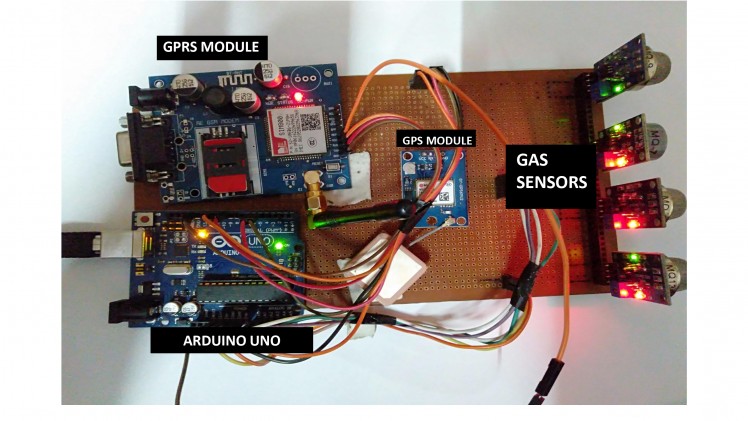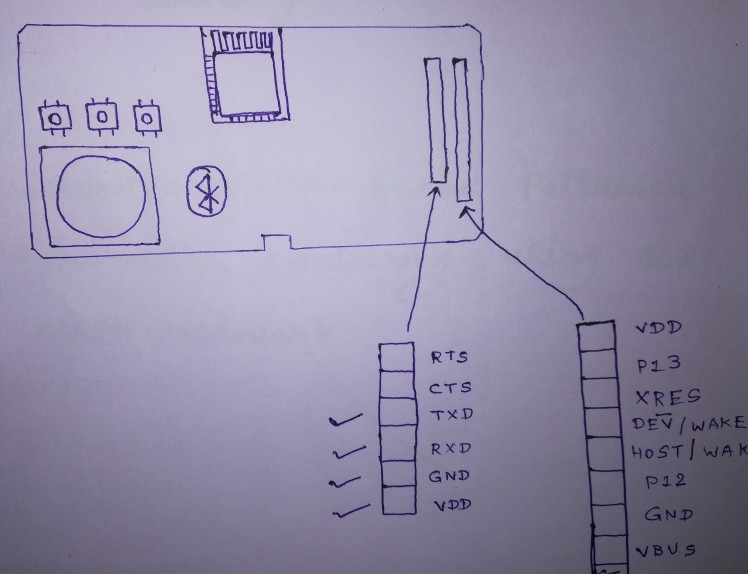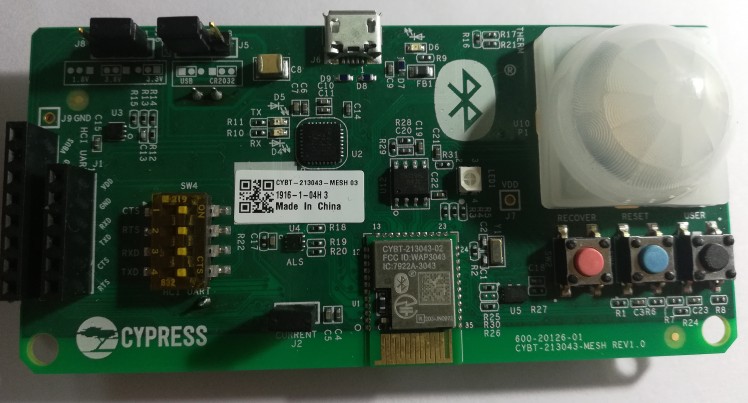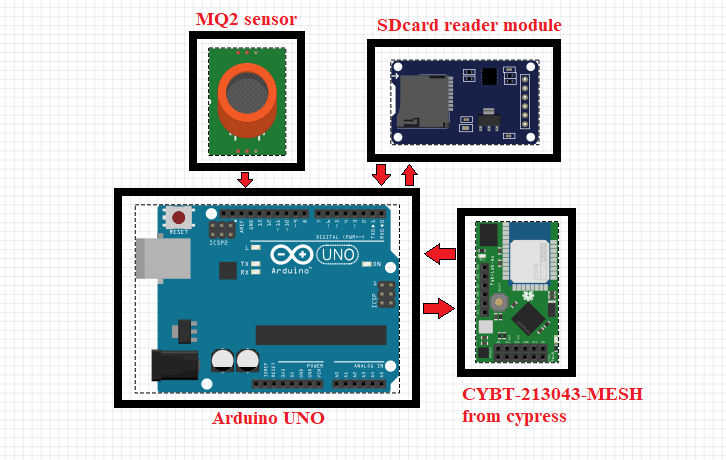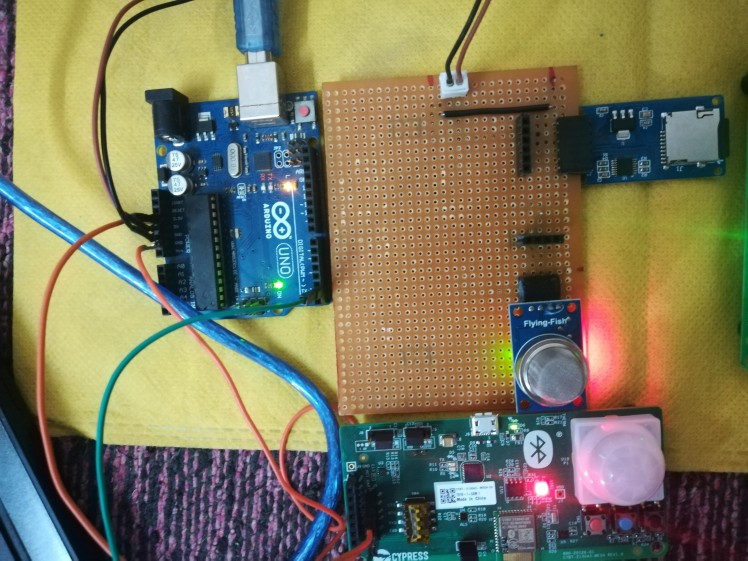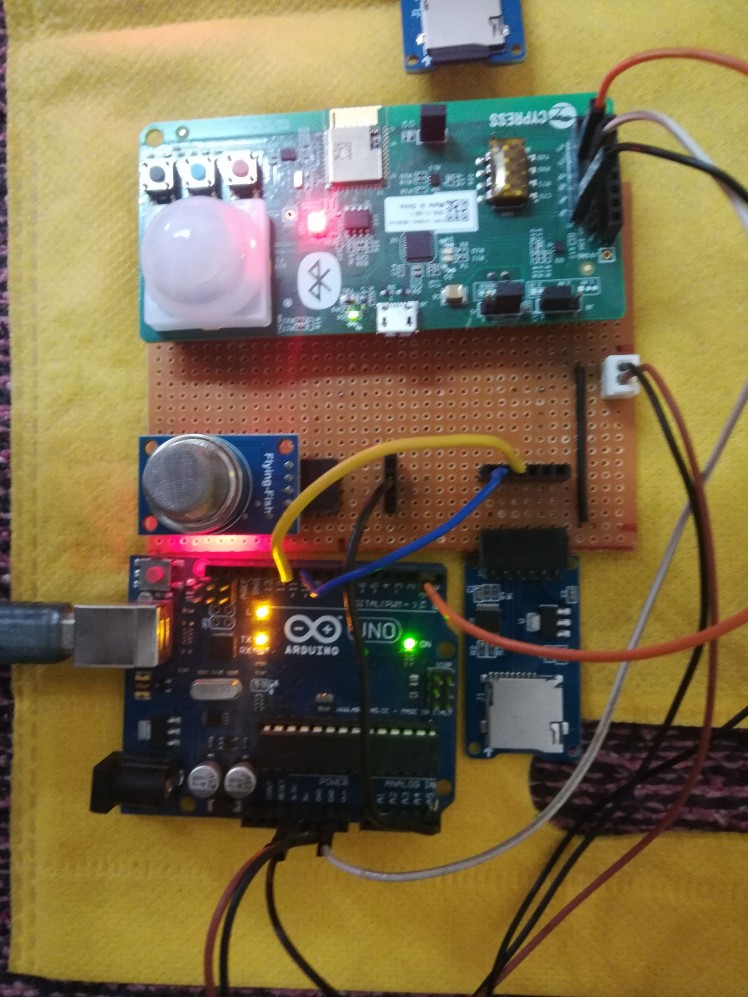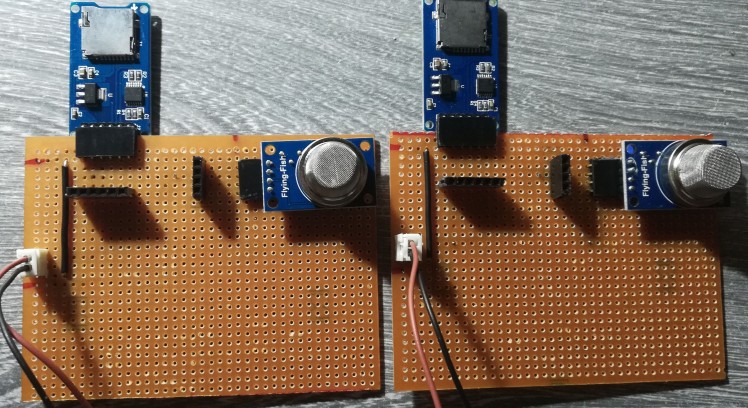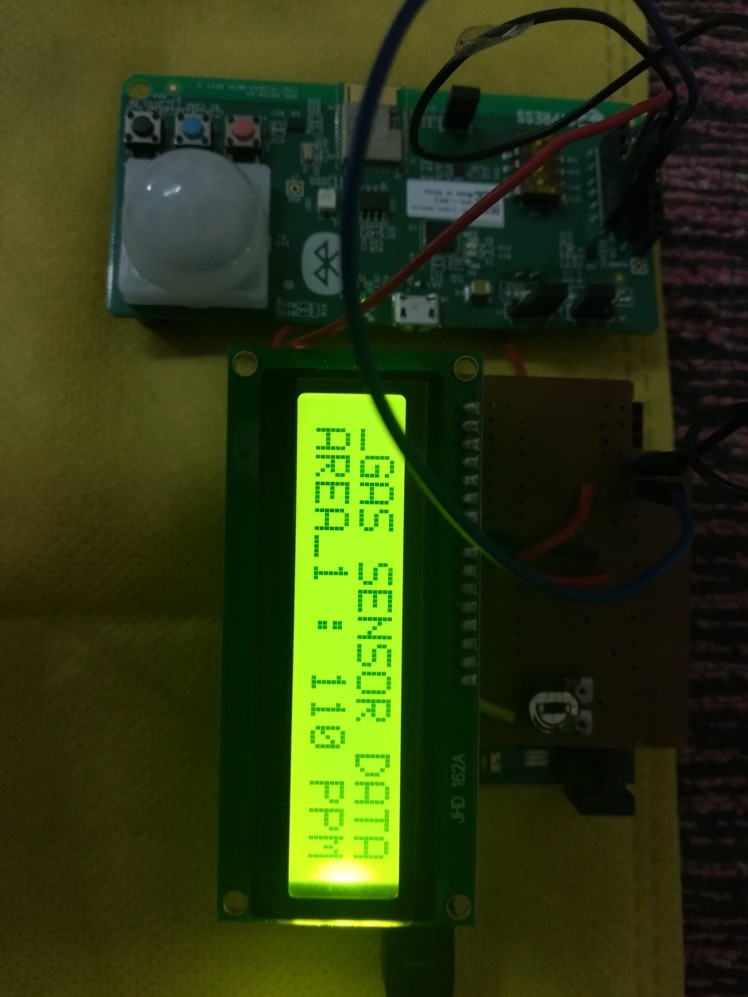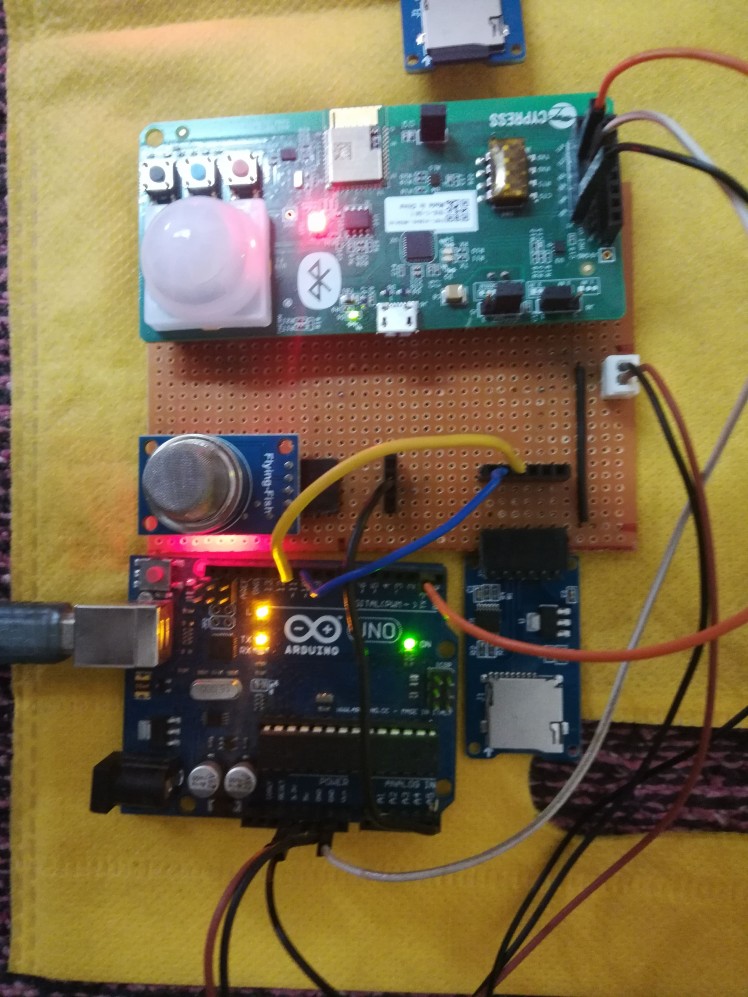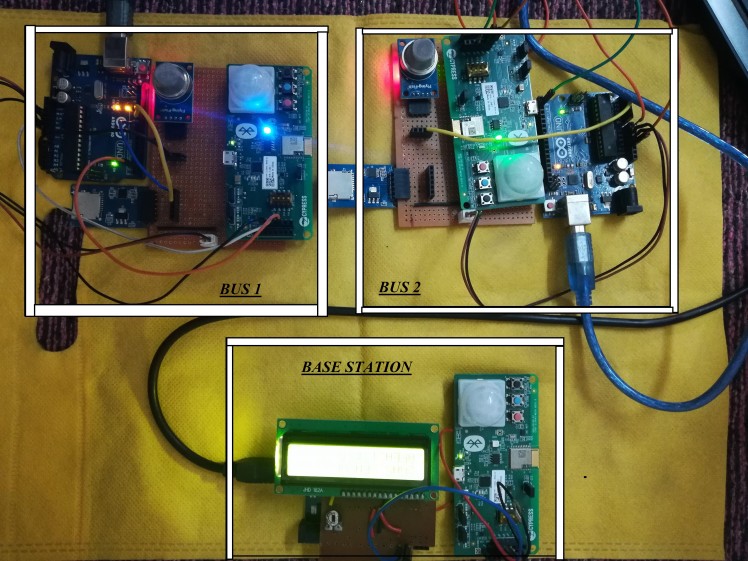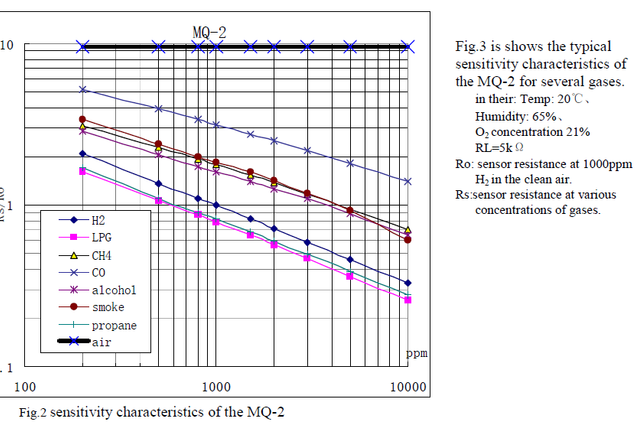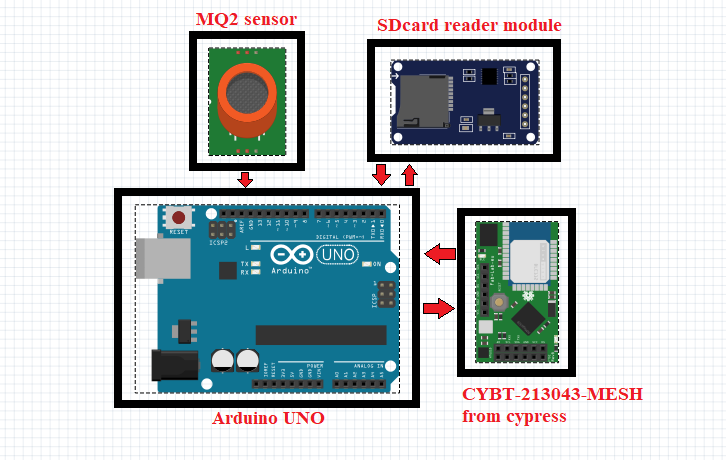As we witness growth of technology, we can sense both sides of it. With advent of industrial age, onset of massive production and over-exploitation of precious resources, pollution is today one of the most highly debated issue. Prior to controlling anything it is important to measure it and considering this, Inventors explored the measurement techniques and as we can see now many such techniques are available. But a close study of sources of pollution and the pattern in which it is present it comes to view that techniques available today are not enough. All the prevailing techniques are static, their sensors are implanted at a single place and from there they measure the pollution of an area. So, there is a lack of real-time and location-specific pollution monitoring techniques. Considering all these limitations we designed a system which can be implanted in any modes of transportation (municipality buses, state transport) which has a vast network and are accessible to almost every area. Then the data along with the latitude and longitude collected by the system is then being sent to the website and online database with the help of GPRS module. Inventers felicitate the existing air pollution measurement system and designed a better and more reliable air pollution measure system that can be both real-time and location-specific.
Here I have implemented 2 case study with there prototype and compared the results :
(1) Using direct GPRS module for transmitting data and
(2) Using Bluetooth mesh network for the same
CASE STUDY 1 : Using GPRS module
propose a Mobile pollution parameter monitoring system based on GPS receiver and GPRS module.
The proposed system consists of
Mobile sensors (GPS-GPRS system, sensor network, development board etc.)
Communication channel
Base station
Data processing centre
Users.
Users can be anyone who want to access the website either for informative purpose or for research and analytics.
1. Users
This is just an extension of the previous point where the data is processed. Here the data that is processed is continuously tested and is synchronous with the remote non- static and static sensing units. As both the non-static and static sensing units will contribute to the effective calculation of air pollution measurement and its index (AQI/AQHI) and in our case the HAQHI, the system requires rapid real-time functioning to avoid delays and/or glitches.
2. Website/Application on the server:
processed end data is fed to the user presentable platforms which could be anything feasible like an Android App or a Website.
The Data Processing Centre is the next crucial part of the project block diagram after the data is received and acquired in a presentable format that is understandable by a human. The Data Processing Centre then carries out certain pre-decided explainable mathematical functions using the data that is available and in turn provides meaningful data from the raw data input using the mathematical models designed through the research development taking place in AQI and AQHI measurement techniques. Finally, the
3. The Data Processing Centre:
Data Acquisition Data Processing Data Manipulation Base Station – Website/Android App Link Maintenance
The Base Station can be anything from just a virtual cloud platform to a physical network point corresponding to a geographical location. It is a place where the core processes after collecting the useful data is carried out. The Base Station contains the following operating tasks:
Grounded Cable Networks RF Transmission links
4. The Base Station:
Satellite links
The Communication Channel forms the underlying link between the transmitting and receiving end. The transmitting end is connected to the receiving end through one or more routes which includes the following
5. The Communication Channel:
The Sensors form the quintessential part of the part of project. It involves the remote non-static sensor networks formed by the collective contribution of the gas sensors, the GPS-GSM Module, the microcontroller and the hardware associated with it in rendering its services. Whole collective system of different sensors are implanted on public transport such as bus etc.This collective piece of hardware & software integration takes us to the next stage where the data whatsoever collected at these remote sensing units is transmitted to the base station through the Communication Channel.
6. The Sensors:
The block diagram of an implementation of the proposed system is as shown in the Fig. 1
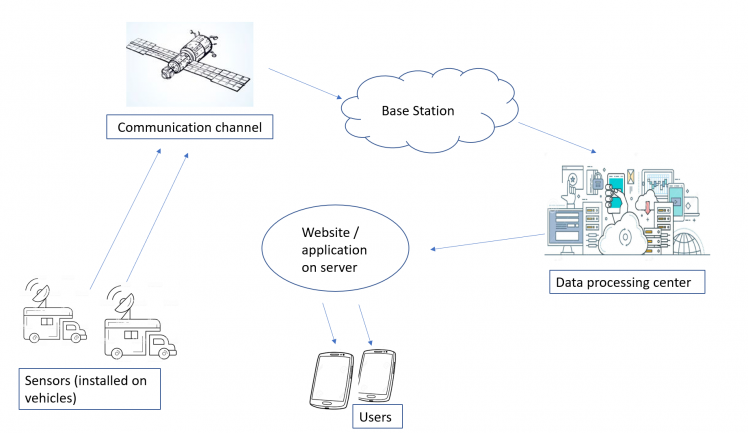
[Fig. 1] Implemented System :
